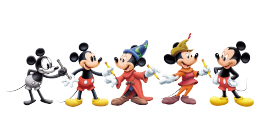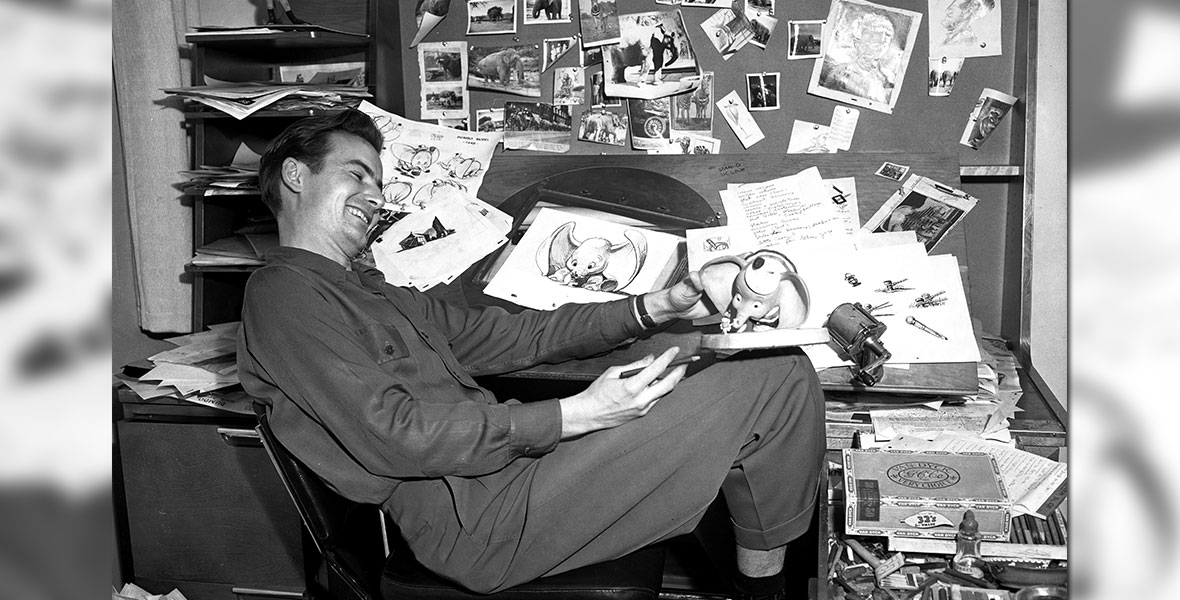Artist Bill Peet had a knack for developing stories, and significantly influenced such Disney animated classics as Dumbo, One Hundred and One Dalmatians, and The Sword in the Stone. His powers of observation, according to fellow Disney Legends Ollie Johnston and Frank Thomas, “enabled him to catch the essence of everything he drew, whether it be a boxcar on a freight train or a Bavarian dwarf living under a lily pad.” Disney sketch artist and storyman Ralph Wright recalled Bill as one of the few artists “who dreamed up real characters that lived and breathed and thought and came from the heart of the story artist.”
Born January 29, 1915, in Grandview, Indiana, Bill grew up in Indianapolis.
As a child, he ignored his family’s poverty by sketching upbeat drawings and writing fanciful stories.
At the time, he didn’t dream he could grow up and make a living doing what he loved—drawing and writing—because “it was too much fun.” During high school, however, he won a scholarship to Herron Art Institute, and his life changed. “My life really began there,” he later said. “I could see the light.”
After briefly working for an Ohio greeting card company, he moved west. In 1937, he was hired as an apprentice animator at The Walt Disney Studios and worked on the first feature-length animated film, Snow White and the Seven Dwarfs. A year later, Bill moved into the Story Department. There, he contributed to such Disney films as Pinocchio, Fantasia, The Three Caballeros, Cinderella, Peter Pan, Alice in Wonderland, Sleeping Beauty, Song of the South, and The Jungle Book.
During the 1950s Bill also worked on shorts, such as Susie, The Little Blue Coupe and Lambert, the Sheepish Lion, and television programs, including the Disneyland series. He eventually became the sole developer of the animated features One Hundred and One Dalmatians and The Sword in the Stone, for which he drew the characters, wrote the screenplays, and directed the actors’ voice performances.
In 1959 Bill published his first children’s book, Hubert’s Hare-Raising Adventure. Then, in 1964, after nearly 30 years with The Walt Disney Company, he retired to pursue a full-time career as a children’s writer. Bill subsequently wrote and illustrated more than 35 children’s tales, which were translated into a multitude of languages.
His best-selling work is his 1989 book, Bill Peet: An Autobiography, which won him the Southern California Children’s Book Writer’s medal and was named one of four Caldecott Honor Books.
Bill passed away on May 11, 2002, in Studio City, California.



